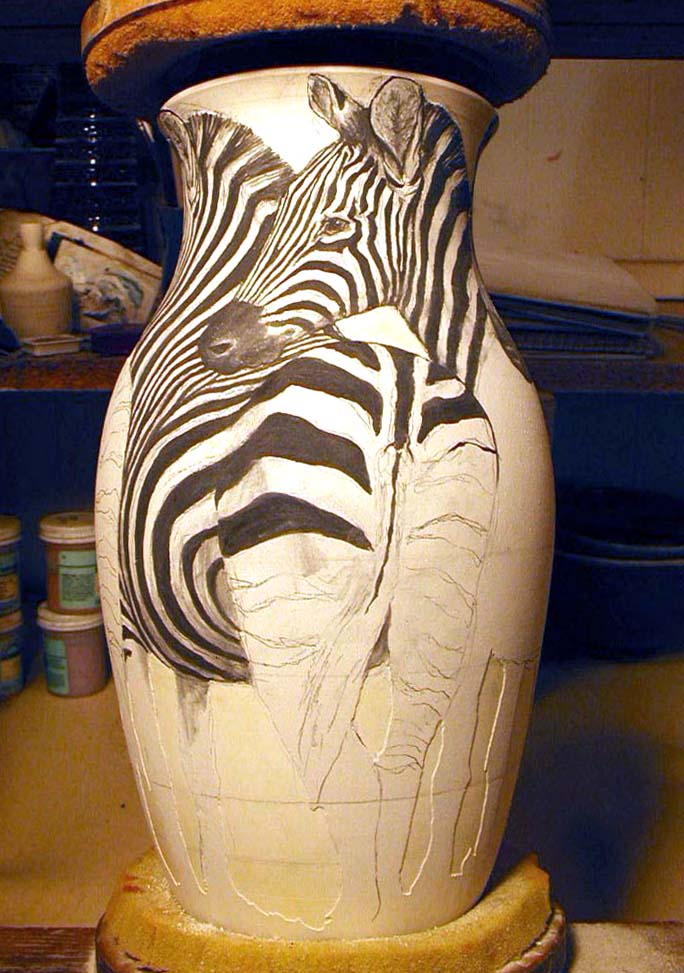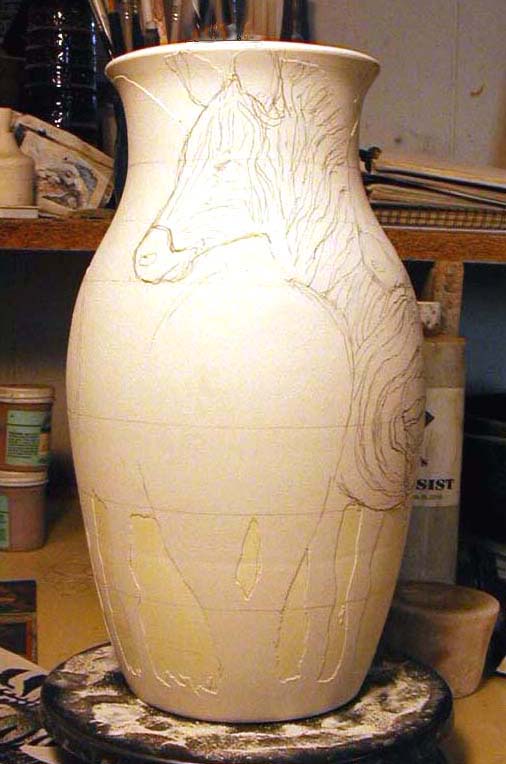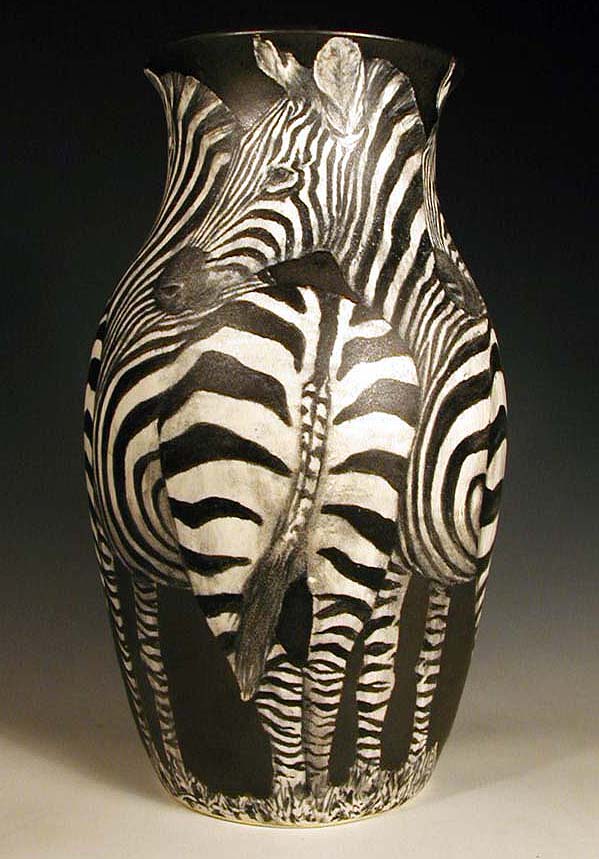
After zebras were drawn in pencil, I began to paint them with underglaze paints. I work in the top area first so I don't smudge the underglazes as my hand rests on the pot. After the underglazes were applied, I painted wax resist over the zebras and waited a day for it to harden. Then I dipped the pot in black glaze to fill in the background areas. I cleaned up any black glaze that stuck to the wax, then cleaned up the edge where the white and black glazes meet with a sharp stainless steel rib. This must be done carefully because if there is a glaze built-up at the meeting edges, the upper glaze will probably run down into the lower glaze. The pot was now ready to fire.
|


